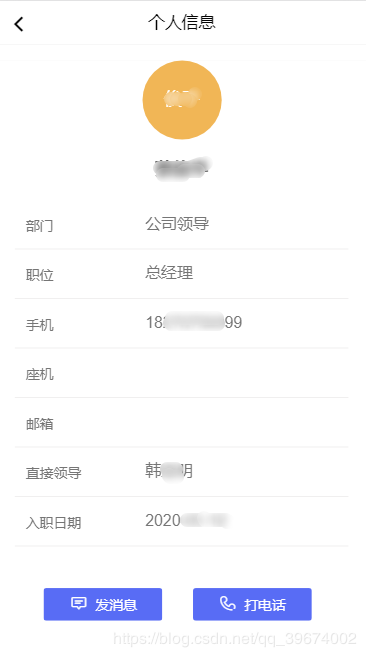HTML5中的網(wǎng)絡(luò)存儲(chǔ)實(shí)現(xiàn)方式
傳統(tǒng)方式使用document.cookie來進(jìn)行存儲(chǔ),但是由于其存儲(chǔ)的空間只有4KB左右,并且需要復(fù)雜的操作進(jìn)行解析,給發(fā)開者帶來很多不便,為此,HTML5規(guī)范提出了網(wǎng)絡(luò)存儲(chǔ)的解決方案,本文通過...
傳統(tǒng)方式使用document.cookie來進(jìn)行存儲(chǔ),但是由于其存儲(chǔ)的空間只有4KB左右,并且需要復(fù)雜的操作進(jìn)行解析,給發(fā)開者帶來很多不便,為此,HTML5規(guī)范提出了網(wǎng)絡(luò)存儲(chǔ)的解決方案,本文通過實(shí)例代碼給大家詳細(xì)介紹,感興趣的朋友一起看看吧
1 前言
隨著互聯(lián)網(wǎng)的快速發(fā)展,基于網(wǎng)頁(yè)的應(yīng)用越來越普遍,同時(shí)也變得越來越復(fù)雜,為了滿足日益更新的需求,會(huì)經(jīng)常性的在本地設(shè)備上存儲(chǔ)數(shù)據(jù),例如記錄歷史活動(dòng)信息。傳統(tǒng)方式使用document.cookie來進(jìn)行存儲(chǔ),但是由于其存儲(chǔ)的空間只有4KB左右,并且需要復(fù)雜的操作進(jìn)行解析,給發(fā)開者帶來很多不便,為此,HTML5規(guī)范提出了網(wǎng)絡(luò)存儲(chǔ)的解決方案。
2 Web storage及其兩種存儲(chǔ)方式
2.1 Web Storage簡(jiǎn)介
2.1.1 特點(diǎn)
(1)設(shè)置數(shù)據(jù)和讀取數(shù)據(jù)比較方便
(2)容量較大,sessionStorage約5M,localStorage約20M
(3)只能存儲(chǔ)字符串,如果要存儲(chǔ)JSON對(duì)象,可以使用window.JSON的stringify()方法和parse()方法進(jìn)行序列化和反序列化。
2.1.2 優(yōu)勢(shì)
(1)減少網(wǎng)絡(luò)流量:一旦數(shù)據(jù)保存在本地后,就可以避免再向服務(wù)器請(qǐng)求數(shù)據(jù),因此減少不必要的數(shù)據(jù)請(qǐng)求,減少數(shù)據(jù)在瀏覽器和服務(wù)器間不必要地來回傳遞。
(2)快速顯示數(shù)據(jù):性能好,從本地讀數(shù)據(jù)比通過網(wǎng)絡(luò)從服務(wù)器獲得數(shù)據(jù)快得多,本地?cái)?shù)據(jù)可以即時(shí)獲得。加上網(wǎng)頁(yè)本身也可以有緩存,整個(gè)頁(yè)面和數(shù)據(jù)都在本地的話,可以立即顯示。
(3)臨時(shí)存儲(chǔ):很多時(shí)候數(shù)據(jù)只需要在用戶瀏覽一組頁(yè)面期間使用,關(guān)閉窗口后數(shù)據(jù)就可以丟棄了,這種情況使用sessionStorage非常方便。
2.2 localStorage實(shí)現(xiàn)本地存儲(chǔ)
localStorage作為HTML5 Web Storage的API之一,主要的作用是進(jìn)行本地存儲(chǔ)。本地存儲(chǔ)是指將數(shù)據(jù)按照鍵值對(duì)的方式保存在客戶端計(jì)算機(jī)中,直到用戶或者腳本主動(dòng)清除數(shù)據(jù),否則該數(shù)據(jù)會(huì)一直存在。也就是說,使用了本地存儲(chǔ)的數(shù)據(jù)將被持久化。localStorage的優(yōu)勢(shì)在于拓展了cookie的4KB限制,并且會(huì)可以將第一次請(qǐng)求的數(shù)據(jù)直接存儲(chǔ)到本地,這個(gè)相當(dāng)于一個(gè)5M大小的針對(duì)于前端頁(yè)面的數(shù)據(jù)庫(kù)。
2.2.1 localStorage中的方法屬性
| 方法屬性 | 描述 |
| setItem(key,value) | 該方法接收一個(gè)鍵名和值作為參數(shù),將會(huì)把鍵值對(duì)添加到存儲(chǔ)中,如果鍵名存在,則更新其對(duì)應(yīng)的值 |
| getItem(key) | 該方法接收一個(gè)鍵名作為參數(shù),返回鍵名對(duì)應(yīng)的值 |
| romoveItem(key) | 該方法接收一個(gè)鍵名作為參數(shù),并把該鍵名從存儲(chǔ)中刪除 |
| length | 類似數(shù)組的length屬性,用于訪問Storage對(duì)象中item的數(shù)量 |
| key(n) | 用于訪問第n個(gè)key的名稱 |
| clear() | 清除當(dāng)前域下的所有l(wèi)ocalSotrage內(nèi)容 |
表格 2.2.1
代碼示例:
<!DOCTYPE? html>
<html>?
<head>?
<meta? charset="UTF-8">?
<title>localStorage</title>?
</head>?
<body>?
<input? type="text" id="username" >?
<input? type="button"?? value="localStorage 設(shè)置數(shù)據(jù) "? id="localStorageId">?
<input? type="button"?? value="localStorage 獲取數(shù)據(jù) "? id="getlocalStorageId">?
<input? type="button"?? value="localStorage 刪除數(shù)據(jù) "? id="removesessionStorageId">
?
<script>?
document.getElementById("localStorageId").onclick=function(){?
// 把用戶在 input?? 里面數(shù)據(jù)的數(shù)據(jù)保存到 localStorage?
var? username=document.getElementById("username").value;?
window.localStorage.setItem("username",username);
?};?
document.getElementById("getlocalStorageId").onclick=function(){?
// 獲取數(shù)據(jù),從 localStorage?
var? username=window.localStorage.getItem("username");?
alert(username);?
};?
document.getElementById("removesessionStorageId").onclick=function(){?
// 刪除 localStorage 中的數(shù)據(jù)?
var? username=document.getElementById("username").value;?
window.localStorage.removeItem("username");?
};?
</script>?
</body>?
</html>
sessionStorage 主要用于區(qū)域存儲(chǔ),區(qū)域存儲(chǔ)是指數(shù)據(jù)只在單個(gè)頁(yè)面的會(huì)話期內(nèi)有效。由于 sessionStroage 也是 Storage 的實(shí)例, sessionStroage 與 localStorage 中的方法基本一致,唯一區(qū)別就是存儲(chǔ)數(shù)據(jù)的生命周期不同, locaStorage 是永久性存儲(chǔ),而 sessionStorage 的生命周期與會(huì)話保持一致,會(huì)話結(jié)束時(shí)數(shù)據(jù)消失。
2.3sessionStorage實(shí)現(xiàn)區(qū)域存儲(chǔ)
從硬件方面理解, localStorage 的數(shù)據(jù)是存儲(chǔ)子在硬盤中的,關(guān)閉瀏覽器時(shí)數(shù)據(jù)仍然在硬盤上,再次打開瀏覽器仍然可以獲取,而 sessionStorage 的數(shù)據(jù)保存在瀏覽器的內(nèi)存中,當(dāng)瀏覽器關(guān)閉后,內(nèi)存將被自動(dòng)清除,需要注意的是, sessionStorage 中存儲(chǔ)的數(shù)據(jù)只在當(dāng)前瀏覽器窗口有效。
代碼示例:
<!DOCTYPE? html>?
<html>?
<head>?
<meta? charset="UTF-8">?
<title>sessionStorage</title>?
</head>?
<body>?
姓名:? <input type="text" id="username"> 年齡:? <input type="text" id="age">?
<input? type="button" value="sessionStorage 設(shè)置數(shù)據(jù) "? 11 id="sessionStorageId">?
<input? type="button" value="sessionStorage 獲取數(shù)據(jù) "? id="getsessionStorageId">
<input? type="button" value="sessionStorage 清除所有數(shù)據(jù) "? id="clearsessionStorageId">?
<script>?
// 增加數(shù)據(jù)?
document.getElementById("sessionStorageId").onclick? = function() {?
// 獲取姓名和年齡輸入框的值?
var? username = document.getElementById("username").value;?
var age =? document.getElementById("age").value;?
// 定義一個(gè) user 對(duì)象用來保存獲取的信息?
var user? = {?
username: username,?
age: age?
}?
// 使用 stringify() 將 JSON 對(duì)象序列號(hào)并存入到 sessionStorage?
window.sessionStorage.setItem("user",JSON.stringify(user));
?
};
?
//sessionStorage?? 里面存儲(chǔ)數(shù)據(jù),如果關(guān)閉了瀏覽器,數(shù)據(jù)就會(huì)消失 ..?
// 單個(gè)瀏覽器窗口頁(yè)面有效?
document.getElementById("getsessionStorageId").onclick? = function() {?
var valu = window.sessionStorage.getItem("user");?
alert(valu);?
};?
// 清除所有的數(shù)據(jù)?
document.getElementById("clearsessionStorageId").onclick? = function() {?
window.sessionStorage.clear();?
};?
</script>?
</body>?
</html>
3 總結(jié)
HTML5中的兩種存儲(chǔ)方式都比較實(shí)用,我們?cè)谠O(shè)計(jì)前端頁(yè)面時(shí),可以根據(jù)相應(yīng)的用戶訪問情況預(yù)測(cè)來增添相應(yīng)的js,既增加了用戶瀏覽的體驗(yàn),又能實(shí)現(xiàn)存儲(chǔ)管理的高效性,合理的利用存儲(chǔ)空間。
到此這篇關(guān)于HTML5中的網(wǎng)絡(luò)存儲(chǔ)的文章就介紹到這了,更多相關(guān)html5 網(wǎng)絡(luò)存儲(chǔ)內(nèi)容請(qǐng)搜索以前的文章或繼續(xù)瀏覽下面的相關(guān)文章
- HTML5離線存儲(chǔ)Manifest原理及使用詳解
- HTML5調(diào)用手機(jī)發(fā)短信和打電話功能
- HTML5標(biāo)簽HTMLCollection和NodeList的區(qū)別詳解
- HTML5網(wǎng)頁(yè)中iframe與window.onload如何使用詳解
- HTML5網(wǎng)頁(yè)body設(shè)置自適應(yīng)全屏示例代碼
- Html5 canvas中width、height和style的寬高區(qū)別詳解
- 一張圖看懂HTML5的前端性能優(yōu)化
- YouTube默認(rèn)HTML5視頻播放技術(shù) 或引發(fā)流媒體視頻終端

HTML5離線存儲(chǔ)Manifest原理及使用詳解
文章主要介紹了H5離線存儲(chǔ)Manifest原理及使用,文中通過示例代碼介紹的非常詳細(xì),需要的朋友們下面隨著小編來一起學(xué)習(xí)學(xué)習(xí)吧理解:離線存儲(chǔ)可以將站點(diǎn)的文件儲(chǔ)存在本地,在沒有網(wǎng)絡(luò)...

HTML5調(diào)用手機(jī)發(fā)短信和打電話功能
文章主要介紹了HTML5調(diào)用手機(jī)發(fā)短信和打電話功能,本文通過實(shí)例代碼給大家介紹的非常詳細(xì),需要的朋友可以參考下前言本來感覺用H5寫調(diào)用電話撥號(hào)功能和發(fā)送短信功能會(huì)很不好寫...

HTML5標(biāo)簽HTMLCollection和NodeList的區(qū)別詳解
文章主要介紹了HTML5中的HTMLCollection和NodeList的區(qū)別詳解,文中通過示例代碼介紹的非常詳細(xì),需要的朋友們下面隨著小編來一起學(xué)習(xí)學(xué)習(xí)吧HTML5 HTMLCollection和NodeList的...

HTML5網(wǎng)頁(yè)中iframe與window.onload如何使用詳解
文章主要介紹了iframe與window.onload如何使用詳解,文中通過示例代碼介紹的非常詳細(xì),需要的朋友們下面隨著小編來一起學(xué)習(xí)學(xué)習(xí)吧。前言在項(xiàng)目上,需要等頁(yè)面加載完之后再執(zhí)行一...

HTML5網(wǎng)頁(yè)body設(shè)置自適應(yīng)全屏示例代碼
文章主要介紹了HTML5 body設(shè)置自適應(yīng)全屏,文中通過示例代碼介紹的非常詳細(xì),需要的朋友們下面隨著小編來一起學(xué)習(xí)學(xué)習(xí)吧用什么代碼實(shí)現(xiàn)?不允許有白色底色產(chǎn)生,因?yàn)槭謾C(jī)高度不一...

Html5 canvas中width、height和style的寬高區(qū)別詳解
文章主要給大家介紹了關(guān)于H5 canvas中width、height和style的寬高區(qū)別的相關(guān)資料,文中通過示例代碼介紹的非常詳細(xì),對(duì)大家的學(xué)習(xí)或者工作具有一定的參考學(xué)習(xí)價(jià)值,需要的朋友們...

一張圖看懂HTML5的前端性能優(yōu)化
最近1個(gè)月一直在設(shè)計(jì)HTML5相關(guān)的產(chǎn)品,沒錯(cuò),主要是用于微信的,雖然很多情況下,HTML5頁(yè)面的設(shè)計(jì)類似于APP,但是由于是網(wǎng)頁(yè)性的東西,對(duì)移動(dòng)網(wǎng)絡(luò)帶寬和瀏覽器性能,CPU,GP...

YouTube默認(rèn)HTML5視頻播放技術(shù) 或引發(fā)流媒體視頻終端升級(jí)風(fēng)暴
近日,YouTube工程總監(jiān)RichardLeider發(fā)文寫道,在Chrome、IE11、Safari8和beta版Firefox瀏覽器中,YouTube已默認(rèn)采用HTML5技術(shù)播放視頻。
他說,4年前YouTube開始嘗試HTML5技術(shù),當(dāng)...

